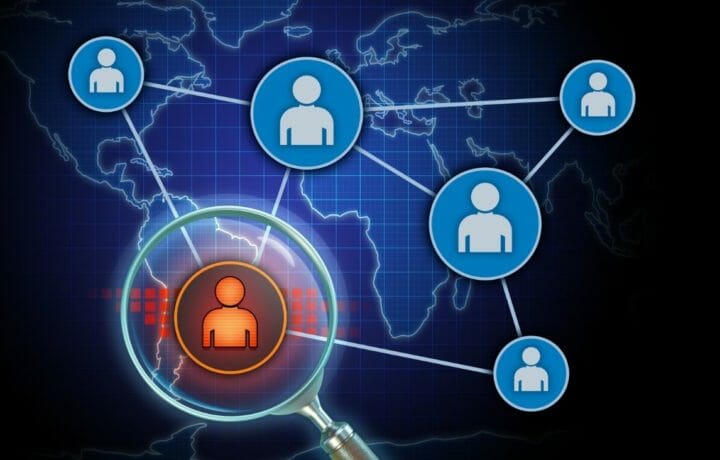Imagine you, a former U.S. Army service member, are now standing at the forefront of defense innovation. You’ve joined a top-secret project at a defense contractor’s realm. The thrill of classified endeavors courses through your veins. But then, an enigmatic email hits your inbox out of the digital blue. It claims to hail from the other side of the world and provide you with opportunities for travel and adventure while employing your long-honed knowledge and skills. They’re dangling a tempting bait: a handsome reward in return for juicy aviation knowledge from your current and former employers. Your heartbeat quickens, and your pulse races. What’s your move?
This isn’t a hypothetical spy thriller setup; it’s the cold reality of an insider threat. Meet Shapour Moinian, an actual former helicopter pilot who landed himself in a data breach and subsequent criminal conviction for conspiring to leak national defense intelligence to China. His tale is just one slice of a concerning pie where insiders jeopardize the security and sanctity of defense contractors and government bodies.
Think insider threats are fiction? Think again. They’re the hard-hitting challenge facing organizations handling sensitive data. Government contractors are under relentless siege from insiders who could single-handedly compromise their work.
Tech: The Shield Against Shadows
Enter technology, the unsung hero of detecting insider threats. It’s the mastermind behind data scrutiny on an unprecedented scale. The magic ingredient? Artificial intelligence (AI) algorithms that keep a watchful eye on employee behavior, ready to catch any flicker of irregularity that might signify danger.
Consider the case of Raytheon, a heavyweight in the defense arena. In 2019, a former employee set his sights on exporting classified missile technology to China. But AI saw through his charade. Those algorithms spotted his unauthorized access to classified data, even if it wasn’t part of his job description. The alarm bells rang, the security hawks swooped in, and the result? His arrest and prosecution. This isn’t just about halting threats in real time; it’s about doing so while treading lightly on the privacy of innocent colleagues.
Ethics and the Legal Tapestry
Technology might be the star, but ethics takes center stage. It’s the guiding light that ensures technology and data don’t morph into invasive monsters. It’s about keeping practices transparent, offering a clear window into tech usage, data maneuvers, and storage norms for the workforce. But it doesn’t stop there. It’s also about preserving the dignity of employees so technology isn’t wielded in irrelevant, excessive, or discriminatory ways. Think biometric technology for identity verification, not an intrusion into personal well-being.
Legitimacy is the word of the day. If you’re wielding tech, it should be necessary and proportional, with employee consent. Security isn’t optional; it’s an essential armor to fend off unauthorized access.
Privacy protection? That’s another vital piece of the puzzle. Data privacy laws, like the Virginia Consumer Data Protection Act (VCDPA) and the California Consumer Privacy Act (CCPA), stand as sentinels guarding personal information rights. If your business falls within their scopes, how you handle your Virginian or Californian employees or customer data must pass muster.
The Psychological Connection
But we’re not done yet – here’s where psychology steps into the ring. It’s about deciphering what makes insiders tick. Using psychological analysis, defense contractors can peer into an employee’s psyche, spotting signs of brewing trouble – stress, resentment, or even radicalization.
Psychological information can come from medical records, revealing mental health woes or substance issues. But tread carefully; the U.S. Health Insurance Portability and Accountability Act (HIPAA) guards this terrain. Respect employees’ privacy rights, even when national security beckons.
Behavioral analysis is another ace up the sleeve. It unveils personality traits, attitudes, emotions, and intentions. Defense contractors can catch shifts that might point to brewing danger. How? Through interviews, surveys, tests, and observations. They can even track an employee’s online dance through Security Information and Event Management (SIEM) systems, detecting unusual logins, data transfers, or network buzz. But this isn’t a free pass; ethical principles and legal requirements must be woven into the fabric. Transparency is paramount, employee consent is a must, and bias has no place.
Blend psychology and technology, and you’ve got a powerhouse. The aim? Enhanced threat detection, defusing the risk of cyber warfare or sabotage. But remember, it’s not just about data; it’s about the delicate waltz between security and human rights.
The Future Unveiled
The story doesn’t end here; it evolves. As technology races forward, so does insider threat detection. Biometric analysis, sentiment dissection, predictive models – these are the chapters of tomorrow. More precise, more effective, all while playing by data privacy rules.




